If you’ve been thinking about trying soil blocking, you might have found that there are an overwhelming amount of soil-blocking recipes online. But which one is the best option for seed starting? I’ve experimented with several different recipes, so you don’t have to!
In this post, I’ll break down the pros and cons of soil blocking, the best recipe to ensure your soil blocks don’t fall apart, and my tips and tricks to get the most out of your soil blocking experience! Let’s get into it.
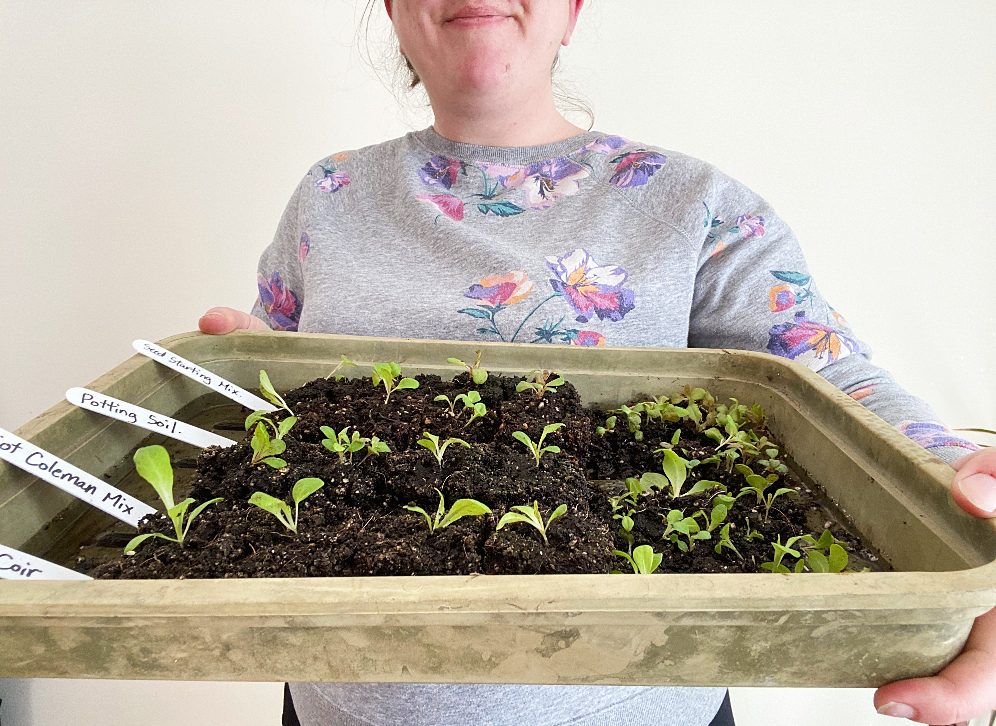
This post contains affiliate links, which means that if you purchase something, I earn a small commission at no extra cost to you. You can read more about it here in my privacy policy. Thanks for supporting Shifting Roots!
WHAT IS SOIL BLOCKING?
Soil blocking is essentially the manual process of making soil blocks. This is done by packing a handheld tool called a soil blocker with a soil mixture (more on this below) and manually pressing that mixture into blocks. You can then plant your seeds in these blocks, place a tray of them under a grow light, and begin the germination process! With the proper technique, soil blocking can be a fun, easy way to seed start, which eliminates the need for various seed-starting pots and sowing trays.
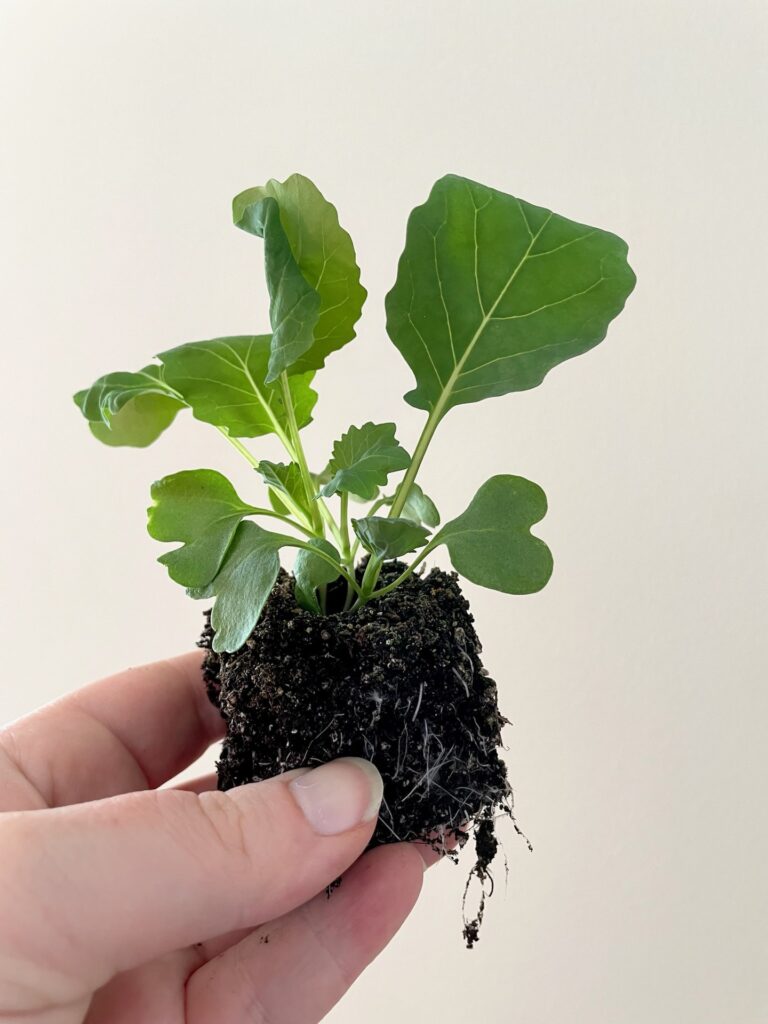
Related: Indoor Seed Starting Schedule for Easy Vegetables & Flowers
PROS & CONS OF SOIL BLOCKING
PROS
- healthier root systems are produced through air pruning and an increase in oxygen
- no transplant shock–some plants don’t like to be bumped up in their seed containers or moved once they’re started. if you soil block, your roots stay in the same container, and it’s easier for the plant to climatize to life outdoors
- the ability to start more seeds indoors
- ease of transplant into the garden
- reduced use of plastic containers
- the ability to save money in the long run
CONS
- the initial cost of the soil-blocking equipment
- not ideal for larger vegetables like pumpkins or squash
- can be a little more time-consuming than other methods
- a sharper learning curve initially than traditional seed starting
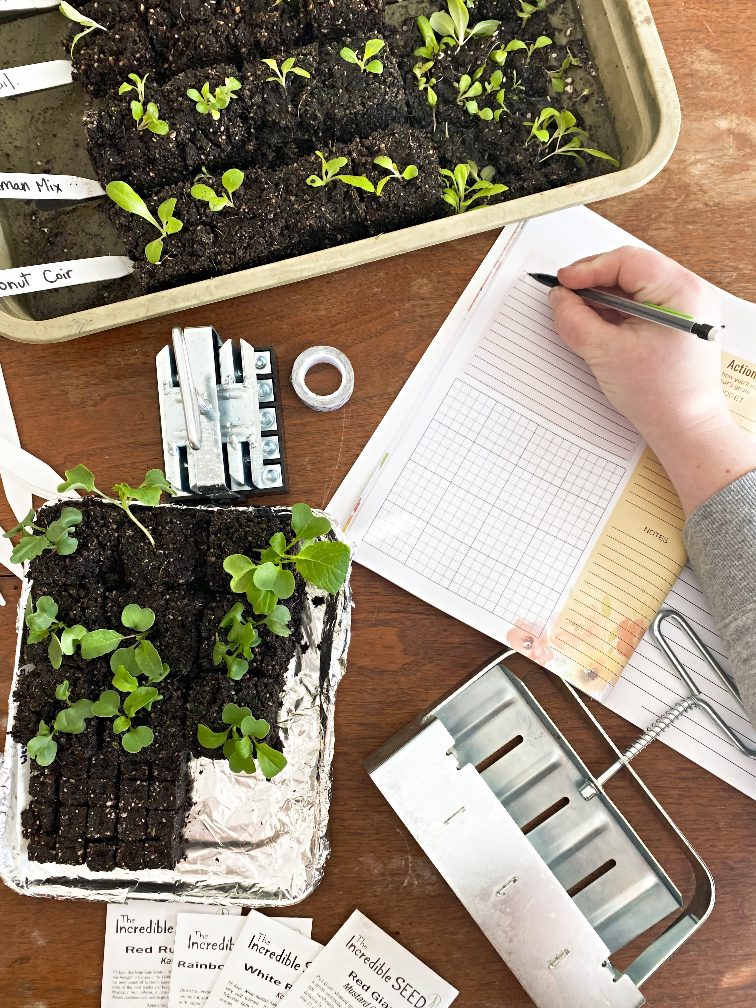
Related: DIY Seed Starting from Your Window
WHAT SUPPLIES DO YOU NEED TO SOIL BLOCK?
These are the basic supplies to get started on your soil-blocking journey:
- soil blocker
- potting soil, seed starting mix, or a combination of peat moss/coconut coir, perlite, all-purpose fertilizer, topsoil, and organic compost–for my recipe experiment, see this video
- spray bottle
- seeds
- seed tray
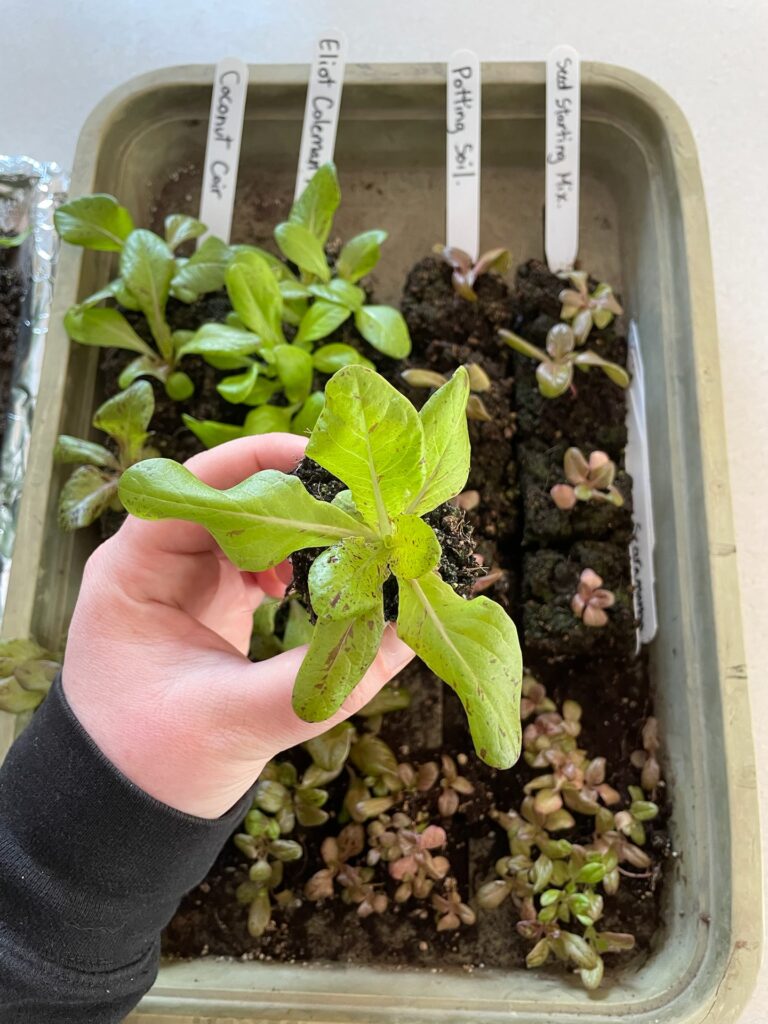
Related: How to Start an Indoor Herb Garden from Seeds
WHAT IS THE BEST SOIL-BLOCKING RECIPE?
I recently experimented with various soil-blocking recipes to determine which soil-block recipe would work best for my gardening needs. I tried plain potting soil, plain seed starting mix, the classic Eliot Coleman recipe, and a version of the Eliot Coleman recipe with coconut coir, a more sustainable alternative to peat moss.
While there was no clear winner, as you’ll see in this video, I did find that the best results came from ingredients that were as finely milled as possible. That said, if you don’t have much time, I suggest using a seed starting mix. If you’ve got the time, the coconut coir mix stands out as the one I will use again. I would stand by any of these mixtures, though, as long as you use the correct watering technique and tightly pack the cubes.
TIPS FOR KEEPING SOIL BLOCKS FROM FALLING APART
The best method for keeping ¾-inch soil blocks moist is to use a spray bottle. Misting soil blocks with water helps hold them together and prevent them from drying up and crumbling.
When you’re bottom watering, leave a space in your soil blocks to pour the water, so it doesn’t immediately hit the soil. If you pour the water this way, they shouldn’t fall apart. Be warned: if you pour the water directly into the center of the blocks, they will break apart.
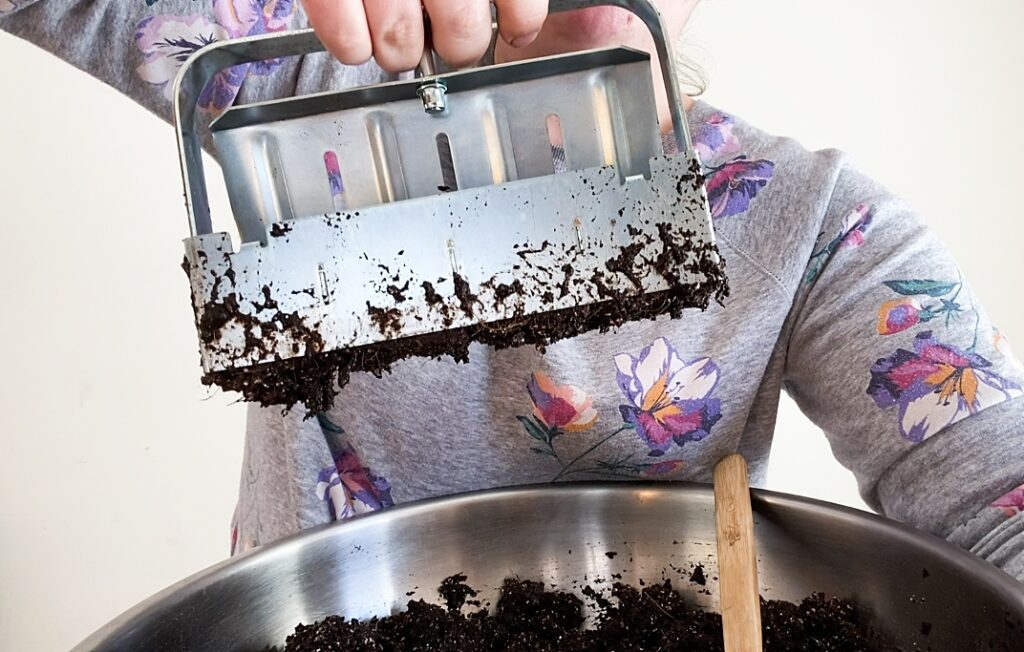
If you liked this blog post, find me on Facebook, TikTok, and Instagram for more cold-climate vegetable gardening tips, delicious recipes, and cut flower goodness! I also make weekly videos over on my YouTube channel. I hope to see you there!
P.S. If you love the content I create for Shifting Roots, consider joining our community on Patreon. Your support means the world to me and I am grateful for each and every one of you!
HAVE YOU TRIED SEED STARTING, ONLY TO BE LEFT WITH STRETCHED-OUT SEEDLINGS AND DEAD PLANTS?
You’re not a bad gardener–you just need a little know-how. For the price of a few seed packets, you can stop wasting time and money and start growing seedlings that actually live, and you get to harvest. Don’t miss out on another growing season. Get your copy of Seed Starting Success now (videos included)!
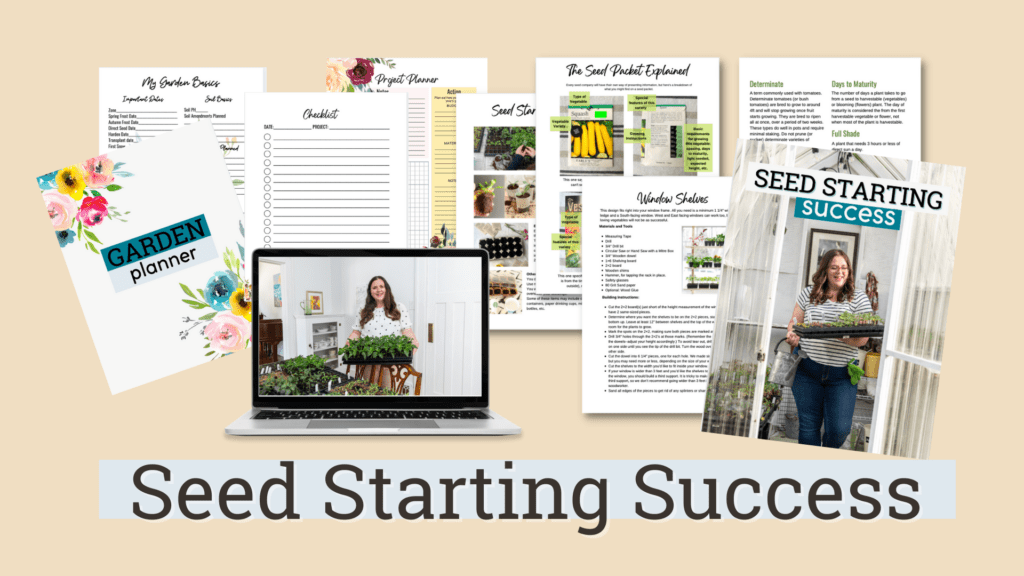
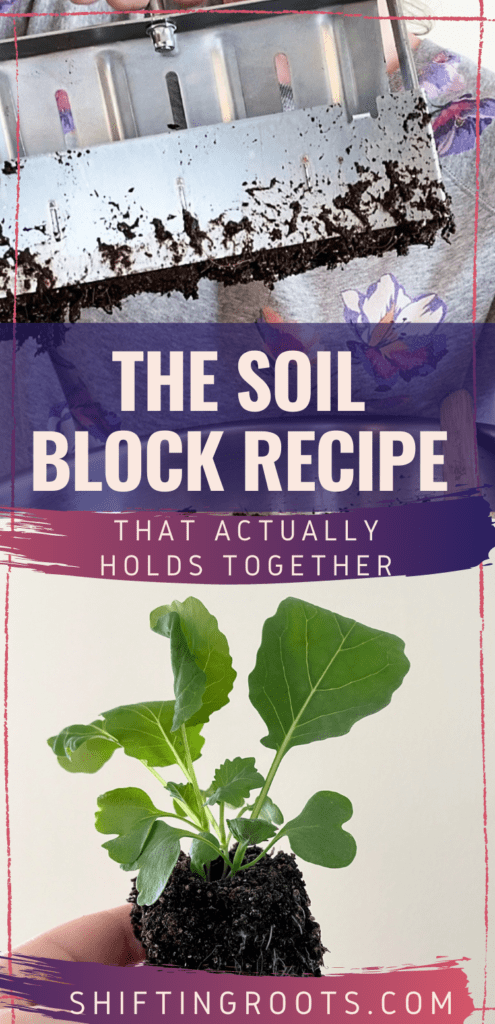
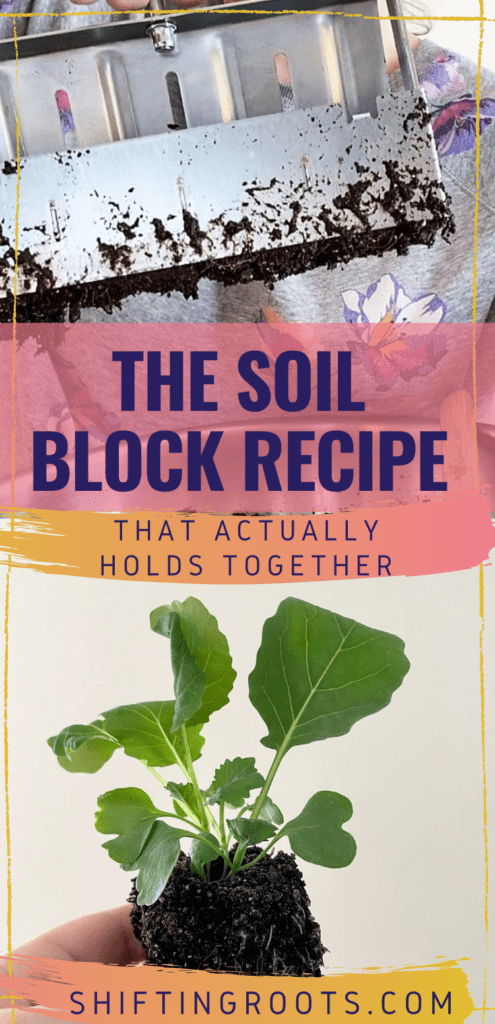

MERRILL
Kathy Quinn
Esther
Sean
Susan
CJ